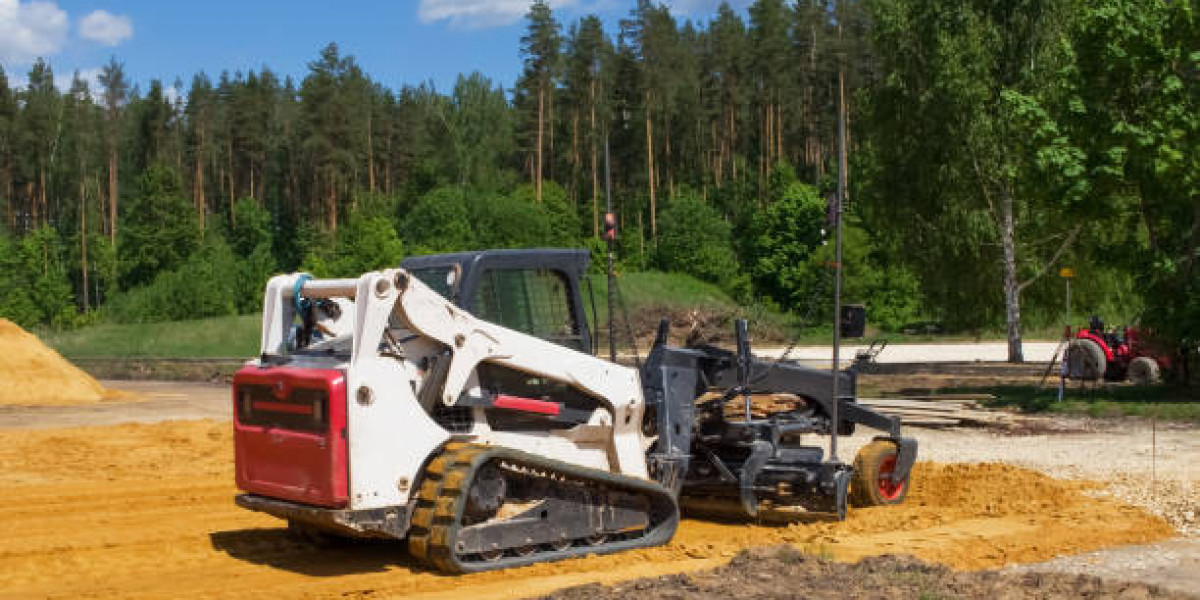Land grading is one of the most important aspects of construction, landscaping, and land development. It involves adjusting the slope and level of the land’s surface to create a solid foundation for a structure or to ensure proper water drainage. Whether you’re building a new home, a commercial property, or even just landscaping your backyard, land grading is essential for the long-term success of your project.
In this article, we’ll dive into the importance of land grading, the different types of grading, the benefits of proper grading, and why hiring a professional grading service is critical to the success of your construction or landscaping project.
What is Land Grading?
Land grading is the process of altering the slope or elevation of the ground. It can involve leveling the soil, filling low spots, or creating slopes to facilitate proper water runoff. Grading is typically done using heavy equipment such as bulldozers, graders, and backhoes, which can reshape the land to meet specific requirements. This process ensures that the ground is stable, safe, and suitable for construction or landscaping.
In construction projects, land grading is often done before the foundation of a building is laid. Proper grading helps prevent structural issues caused by poor soil conditions, uneven surfaces, or improper water drainage. In landscaping, grading is essential for creating visually appealing land contours and ensuring that water flows away from structures, preventing damage from erosion or flooding.
Types of Land Grading
There are different types of land grading depending on the intended purpose of the project. The two main types of grading are rough grading and finish grading.
1. Rough Grading
Rough grading is the initial stage of land grading. This process involves clearing the land of debris, vegetation, rocks, and other obstacles, as well as removing or adding soil to create a general shape for the land. Rough grading focuses on establishing the overall elevation and slope of the site, preparing it for more precise work.
During rough grading, a bulldozer or grader is used to move large quantities of earth, either leveling the land or building up areas that are too low. This stage doesn’t need to be perfect; its primary purpose is to provide a foundation for more detailed work later on.
2. Finish Grading
Finish grading follows rough grading and involves finer adjustments to the land’s surface. This process focuses on ensuring that the land is level or sloped as needed, and it is done with great attention to detail. During finish grading, the soil is smoothed and compacted to create a stable surface that is ready for the next steps, whether that’s laying a foundation for a building or creating an aesthetically pleasing landscape.
Finish grading is also essential for establishing proper drainage, ensuring that water flows away from the building foundation, and preventing erosion. At this stage, the land is usually shaped to exact specifications, and the surface is prepared for planting, paving, or other landscaping features.
Why Land Grading is Important
Proper land grading is essential for several reasons, both in terms of structural stability and the longevity of a property. Below are the key benefits of proper land grading:
1. Ensures Proper Drainage
One of the most important benefits of land grading is ensuring that water drains away from structures. Improper grading can lead to water pooling around foundations, which can cause significant damage over time. Water damage to the foundation can lead to cracking, shifting, or settling of the building, which can be costly to repair.
Land grading ensures that the land slopes in the right direction, directing water away from the foundation and towards designated drainage areas. Proper grading also reduces the risk of soil erosion, which can wash away topsoil and damage landscaping features.
2. Prevents Erosion
Erosion occurs when water washes away soil, and it can be especially problematic in areas with uneven terrain or improper grading. Erosion can lead to unstable soil conditions, making it difficult to build a solid foundation or maintain healthy landscaping.
Land grading helps prevent erosion by creating slopes that direct water to specific drainage points and by stabilizing the soil. This is especially important in areas prone to heavy rainfall or on properties located on slopes or hillsides.
3. Provides a Stable Foundation
Whether you’re building a home, office, or any other structure, a stable foundation is critical to the integrity and longevity of the building. Land grading ensures that the ground is level, compacted, and prepared to support the weight of the structure.
In addition to providing a solid foundation, proper grading also helps avoid problems such as uneven floors, cracks in the foundation, and shifting structures. By ensuring the land is properly graded, you reduce the risk of costly structural repairs later on.
4. Improves Aesthetic Appeal
In landscaping, grading can be used to create beautiful land contours that enhance the visual appeal of the property. Grading can be used to create slopes, terraced areas, and mounds, which can add dimension and variety to a garden or outdoor space. Whether you want to create a flat area for a patio or a sloped area for a lawn, land grading is essential for shaping the land according to your design preferences.
Grading also plays a role in managing the flow of water around the landscape, ensuring that plants and trees receive proper drainage without standing water that could cause root rot or other issues.
5. Increases Property Value
Proper land grading can increase the value of a property, as it ensures the land is usable, stable, and free of issues that could arise from improper grading. A well-graded property is easier to develop and maintain, making it more attractive to potential buyers.
Whether you're planning to sell your home or commercial property, investing in land grading can be a valuable step in improving the property’s overall value and appeal. Proper grading enhances the property’s curb appeal and ensures that the land is functional for various purposes.
Land Grading Techniques
There are several techniques used in land grading, depending on the specific needs of the project. Below are a few common methods:
1. Cut and Fill
Cut and fill grading involves removing soil from higher areas (cutting) and using it to fill in lower areas (filling). This technique is often used to level a property or to create a specific slope or contour.
2. Contouring
Contouring involves creating gradual slopes along the land’s natural curves, often used to control water runoff and create aesthetically pleasing landforms. This technique is common in landscaping and agricultural projects.
3. Sloping
Sloping is a technique where the land is graded to create a steady slope away from structures, ensuring that water flows away from the building. Slopes are typically designed at a specific angle to ensure effective drainage.
4. Terracing
Terracing is used on steep or hilly properties to create flat, level areas for building or planting. This involves cutting the land into flat steps or terraces that are supported by retaining walls to prevent soil erosion.
Why Hire a Professional Grading Service?
While it might be tempting to attempt land grading on your own, it’s always a good idea to hire a professional grading service. Here’s why:
1. Expert Knowledge and Experience
Professional grading contractors have the necessary experience and expertise to assess the land’s unique needs and determine the best approach to grading. They understand the intricacies of soil conditions, drainage, and leveling, ensuring that the project is done correctly from the start.
2. Proper Equipment
Grading requires specialized equipment such as bulldozers, graders, and backhoes. Professionals have access to the right tools and know how to operate them safely and efficiently.
3. Compliance with Regulations
In many areas, grading projects must comply with local building codes and environmental regulations. Professional grading companies are familiar with these requirements and can ensure that the work is done in compliance with all necessary rules.
4. Efficiency and Time Savings
Land grading can be a time-consuming process. By hiring professionals, you ensure that the project is completed in a timely manner, allowing the next stages of construction or landscaping to proceed without delays.
Conclusion
Land grading is a vital part of any construction or landscaping project. It ensures a stable foundation, proper drainage, and enhances the aesthetic appeal of the land. Whether you are preparing a site for a new home, commercial building, or outdoor garden, proper grading is necessary for the success and longevity of your project.
By hiring a professional grading service, you can ensure that the job is done accurately, efficiently, and in compliance with local regulations. A well-graded property is more stable, functional, and visually appealing, ultimately contributing to the long-term value of the land.










